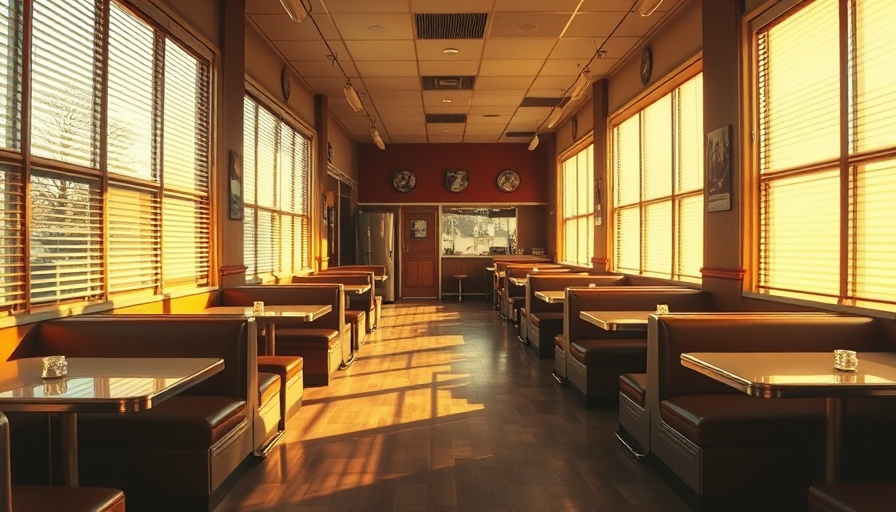
Redefining Diner Culture: A Modern Take on Tradition
Part of what makes the American diner iconic is not just the food, but the atmosphere—an inviting space that encourages social interaction. The recent renovation of the Capital City Diner in Albany by Parts and Labor Design successfully reinvents this classic American staple, proving that modernity can coexist beautifully with nostalgia. This transformation aims to create not only an updated dining experience but also one that resonates with comfort and community.
Embracing Comfort and Connection Through Design
According to co-founder Danu Kennedy, the new design prioritizes comfort and familiarity. The diner remains a place where regulars can feel at home while experiencing something fresh and elevated. From the deeply burgundy Rosso Levanto marble countertops to the upholstered booth seats, every detail has been meticulously chosen to blend sophistication with the inviting warmth typical of diners.
Bringing the 1960s and '70s Aesthetic Back to Life
The design aesthetic pays homage to the classic diner elements typical of mid-century American dining. Features like the reimagined colorful marble checkered flooring and the vintage-inspired chrome details lend a sense of familiarity while elevating the overall experience. Each piece—from the custom spherical lights reminiscent of the 1970s to the circular mustard-toned bar stools—acts as a nod to diner history, bringing a sense of nostalgia to a contemporary setting.
Creating Inviting Spaces for Remote Work
For digital nomads seeking comfortable workspaces, the diner redesign might serve as inspiration. The booths, with their plush upholstery, are reminiscent of ergonomic work seats, offering support while maintaining an inviting appearance. The spatial transitions, highlighted by black mosaic tiles, could easily inform your own way of designing a workspace that feels both cohesive and distinct.
Color and Materials: Enhancing Emotional Well-Being
Research shows that color and material usage can significantly affect mood and productivity. The incorporation of warm tones and natural materials in the Capital City Diner not only elevates aesthetic appeal but also fosters a welcoming atmosphere. Consider applying this principle to your own workspace. Use soft colors and natural elements like plants and wood paneling to create a calming yet stimulating environment.
Art and Decor: A Storytelling Approach
The diner showcases local Albany memorabilia and art along its walls, creating a rich narrative that draws diners into the experience. Similarly, as a digital nomad, enhancing your workspace with personal touches—whether it be motivational quotes, photos, or travel souvenirs—can make your remote environment feel more personalized and inspiring.
Why It Matters: The Intersection of Space and Community
In today's world, where remote work is becoming increasingly prevalent, designing spaces that foster connection is essential. The Capital City Diner serves as a reminder that even in solitary work, the environment we choose can significantly impact our mental welfare. A well-designed space is not just about aesthetics but about enhancing social interactions and a sense of belonging.
A Call to Action for Digital Nomads
The Capital City Diner's renovation has breathed new life into a beloved community fixture, showcasing how thoughtful design can redefine spaces of gathering. As digital nomads, let this inspire you to curate your workspace to ensure it meets not only your functionality needs but also encourages a sense of community and connection—two essential aspects that can't be overlooked, even when working remotely.
 Add Row
Add Row  Add
Add 




Write A Comment